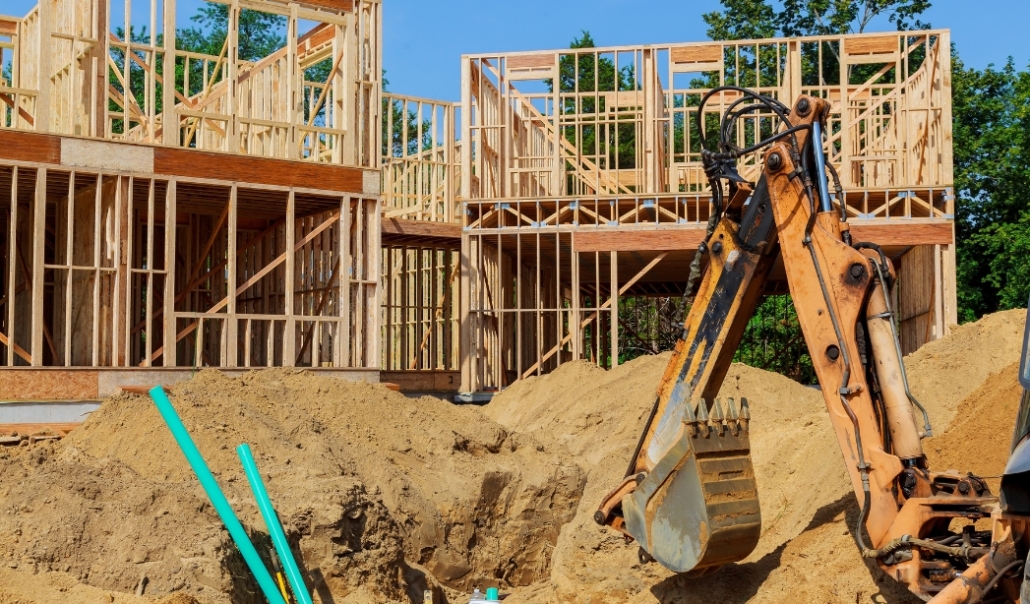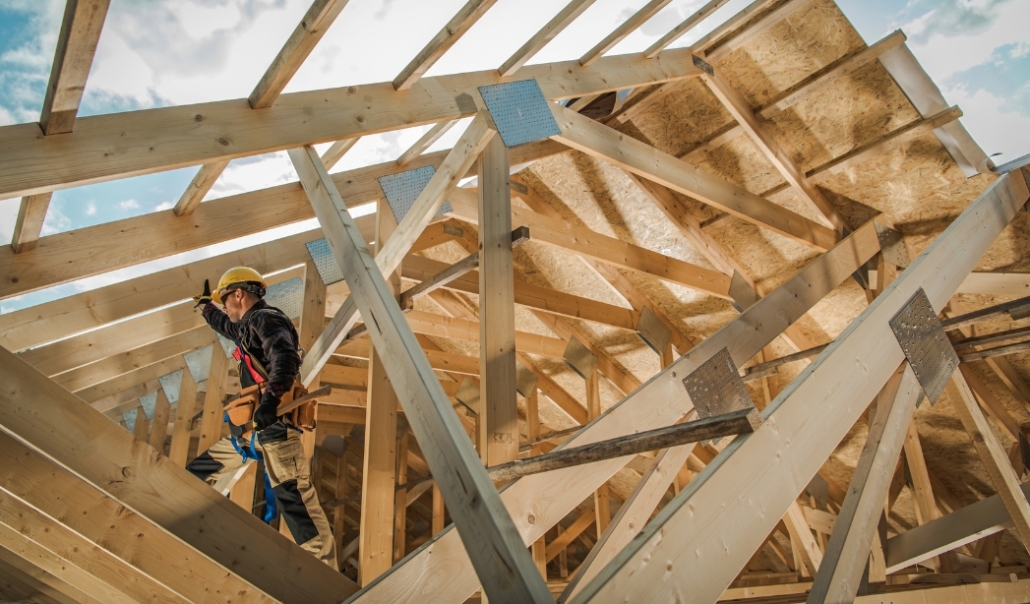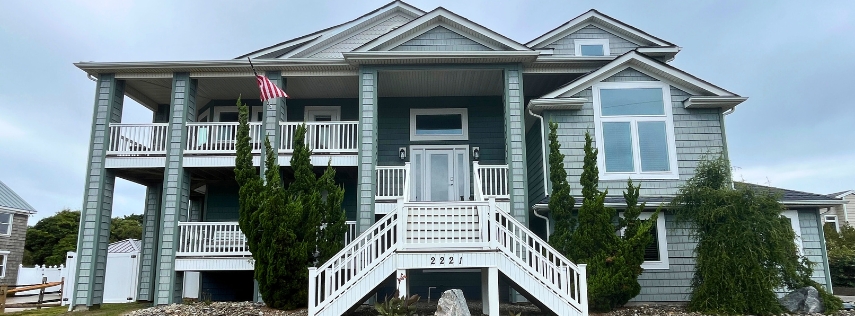Home Renovation Mistakes to Avoid — 30 Common Pitfalls
Thinking about updating your home?
A renovation can add comfort, value, and style, but even small oversights can lead to big regrets. Understanding the most common home renovation mistakes to avoid can help you plan smarter and stay on budget.
So, what are the most important home renovation mistakes to avoid?
Here are 30 of the biggest ones homeowners make, and how to keep your remodel on track:
- Forgetting to set a clear budget
- Underestimating renovation costs
- Skipping a contingency fund for unexpected expenses
- Starting work without proper permits
- Ignoring local building regulations
- Hiring unlicensed contractors
- Not checking contractor references or reviews
- Choosing the cheapest quote instead of the most qualified professional
- Skipping a thorough home inspection before starting
- Overlooking plumbing or electrical upgrades
- Ignoring ventilation or insulation needs
- Cutting corners on material quality
- Buying cheap or unreliable renovation tools
- Failing to plan the project properly
- Setting unrealistic timelines
- Not sequencing renovation tasks correctly
- Taking on complex DIY projects without experience
- Failing to communicate clearly with contractors
- Measuring spaces or materials incorrectly
- Starting renovations too soon after buying a home
- Purchasing furniture or décor too early
- Installing new appliances last
- Overlooking lighting design
- Ignoring small details that impact functionality
- Focusing only on looks instead of long-term durability
- Following design trends blindly
- Mixing too many styles or clashing finishes
- Forgetting about resale value
- Neglecting proper cleanup and disposal
- Not hiring professionals when needed
Each of these renovation mistakes can cost you time, money, and peace of mind.
In the next section, we’ll break down each one in detail, with practical advice on how to avoid them and make your remodel a success.
1. Forgetting to Budget
Many homeowners dive into renovations without setting a clear budget. This is one of the most common home renovation mistakes to avoid. Without financial limits, costs can spiral quickly, leaving projects unfinished or poorly executed. A detailed budget gives direction, helps prioritize spending, and ensures you can actually afford the improvements you’re planning.

2. Underestimating Costs
Even with a budget, many people underestimate how much renovations truly cost. Prices for materials, labor, and permits can add up faster than expected. Underestimating expenses is one of the most common home renovation mistakes to avoid, as unexpected repairs or design changes often push costs higher. Accurate estimates keep your project realistic and prevent unpleasant surprises once construction begins.
3. Not Keeping a Contingency Fund for Unexpected Costs
Renovations rarely go exactly as planned. Hidden water damage, electrical issues, or structural surprises can appear once work begins. Without a contingency fund, these problems can stall progress or force you to cut corners. Setting aside extra money ensures your project continues smoothly even when unexpected expenses arise.
Read More: Seasonal Home Maintenance – Keep Your Property Safe All Year
4. Working Without Permits
Skipping permits to save time or money is a serious mistake. Unpermitted work can lead to fines, forced repairs, or problems when selling your home. Building codes exist to ensure safety and compliance. Always check local regulations and secure the necessary approvals before starting construction to protect your investment.
5. Ignoring Regulations
Every area has specific building codes that govern renovation work. Ignoring them can cause costly setbacks, safety risks, or legal issues. Even small changes, like electrical updates or structural adjustments, must meet local standards. Understanding and following these regulations helps guarantee your renovation is safe, legal, and built to last.

6. Working with Unlicensed Contractors
Hiring unlicensed contractors may seem like a quick way to cut costs, but it can backfire badly. Without proper licensing, there’s no guarantee of skill, accountability, or insurance coverage. Choosing unqualified labor is one of the biggest home renovation mistakes to avoid, as it can leave you with unsafe work and no legal protection. Always verify credentials before signing any agreement.
7. Not Checking Contractor References or Reviews
Failing to check references or online reviews is another common home renovation mistake to avoid. A contractor’s past work and client feedback reveal their reliability, quality, and professionalism. Skipping this step can lead to poor workmanship or unfinished projects. Taking time to research and verify contractors protects both your home and budget.
8. Choosing the Cheapest Contractor
The lowest quote isn’t always the best deal. Cheap contractors often cut corners on materials or rush through projects to stay profitable. What looks like savings upfront can lead to expensive repairs later. Instead of focusing only on price, compare experience, reviews, and overall value to ensure lasting, high-quality results.
9. Choosing the Lowest Quote
Selecting the lowest bid can seem smart, but it often signals trouble. Some contractors underquote to win the job, then cut corners or add surprise costs later. A slightly higher quote from a reputable professional usually means better materials, workmanship, and accountability. Always compare detailed estimates before making a decision.
10. Skipping a Proper Inspection Before Renovation
Starting renovations without a thorough home inspection is risky. Hidden problems like mold, leaks, or faulty wiring can turn small projects into major expenses. A professional inspection helps uncover issues early, allowing you to plan repairs and budget accurately. It’s a simple step that prevents costly surprises once construction begins.
11. Overlooking Electrical or Plumbing Updates
Old wiring or outdated plumbing might not seem urgent, but ignoring them during a renovation can lead to bigger problems later. Overlooking essential system upgrades is one of the most costly home renovation mistakes to avoid. Once walls are open, it’s the perfect time to replace worn systems and ensure long-term safety, efficiency, and peace of mind.
12. Ignoring Ventilation and Insulation
Good ventilation and insulation are essential for comfort and energy efficiency. Ignoring them can lead to moisture buildup, mold growth, and higher utility bills. Proper airflow and insulation keep temperatures stable and protect your home’s structure. Including these upgrades during renovation ensures long-term comfort and healthier indoor air quality.
13. Skimping on Quality
Cutting corners to save money often leads to regret. Cheap fixtures, finishes, or labor may look fine at first but wear out quickly. High-quality materials and skilled craftsmanship last longer and perform better. Investing in quality upfront prevents repeated repairs and gives your renovation a polished, professional finish that endures.
Read More: How to Choose a Home Builder – 30 Key Tips for Virginia Beach
14. Buying Cheap Materials
Low-cost materials might seem like a bargain, but they rarely stand the test of time. Floors scratch, cabinets warp, and paint fades faster. Durable materials may cost more initially, yet they add value and longevity to your home. Always balance affordability with quality to achieve lasting results in your renovation.
15. Buying Cheap Home Renovation Tools
Using low-quality tools might save money upfront, but it can slow your progress and compromise results. Relying on cheap or unreliable equipment is one of the home renovation mistakes to avoid, since inaccurate cuts, weak drills, or dull blades make even simple jobs frustrating. Quality tools ensure safer, more precise work and long-lasting, professional results.
16. Poor Planning
Jumping into renovations without a clear plan often leads to confusion, delays, and budget overruns. Without defined goals, timelines, or design choices, decisions become chaotic mid-project. A detailed plan keeps everyone aligned and ensures materials and contractors are ready when needed. Thoughtful preparation is the foundation of every successful renovation.
17. Setting Unrealistic Timelines
Many homeowners underestimate how long renovations actually take. Weather delays, shipping issues, or unexpected repairs can easily push deadlines back. Expecting everything to finish perfectly on schedule only adds stress. Building flexibility into your timeline helps manage expectations and keeps your renovation on track even when challenges arise.
18. Not Sequencing Renovation Tasks Properly
Doing projects out of order can create unnecessary work and wasted money. Painting before installing new floors or updating lighting after ceilings are finished leads to costly rework. A well-thought-out sequence keeps progress smooth and efficient. Always complete structural and electrical tasks first, then move to finishes, fixtures, and final touches.
19. Deciding to DIY
Taking the do-it-yourself route can be rewarding, but it’s not always wise. Complex jobs like electrical wiring or plumbing require experience and proper tools. Attempting advanced projects without the right skills is one of the most common home renovation mistakes to avoid. Know your limits and handle only what you can manage safely, leave specialized work to trained professionals.

20. Not Hiring a Professional
Trying to handle everything alone may seem cost-effective but often results in poor quality and frustration. Professionals bring expertise, tools, and efficiency that ensure the job’s done right. Hiring qualified contractors saves time and money in the long run while guaranteeing your renovation meets safety standards and looks polished.
21. Poor Communication with Contractors
Misunderstandings between homeowners and contractors can derail a project quickly. Vague instructions, unshared expectations, or missing updates often lead to mistakes and delays. Clear, consistent communication, through written agreements, regular check-ins, and progress reviews, keeps everyone aligned. The more transparent you are, the smoother and more successful your renovation will be.
22. Measuring Incorrectly
Inaccurate measurements are one of the simplest yet most costly home renovation mistakes to avoid. A few centimeters off can mean ill-fitting cabinets, uneven floors, or wasted materials. Always double-check dimensions before cutting, ordering, or installing. Precise measurements save time, reduce frustration, and ensure everything fits perfectly the first time.
Read More: Home Remodels that Add Value – 15 Upgrades Worth the Investment
23. Renovating Too Soon
Starting renovations immediately after moving in can lead to regret. Living in a space for a few months helps you understand its light, flow, and functionality. Rushing into changes before that insight often results in costly redesigns. Taking time to observe how you truly use your home leads to smarter updates.
24. Buying Furniture and Furnishings Too Early
Purchasing furniture or décor before the renovation is complete can cause headaches. Measurements may change, colors might clash, or layouts could shift as work progresses. Buying too early is one of the easiest home renovation mistakes to avoid, since waiting until construction is finished ensures everything fits perfectly and complements your final design. Patience always pays off.
25. Installing New Appliances Last
Leaving appliance installation until the very end can create unnecessary complications. Measurements, wiring, and plumbing need to be adjusted around specific appliance models. Planning installations early prevents rework and ensures everything fits seamlessly. Coordinating with contractors during construction helps avoid last-minute issues and guarantees a smooth, functional kitchen or laundry area.
26. Ignoring Lighting
Lighting can transform how a space looks and feels, yet it’s often overlooked during renovations. Poor lighting makes even beautiful designs feel dull or cramped. Layered lighting, combining ambient, task, and accent fixtures, adds warmth, depth, and functionality. Prioritizing a thoughtful lighting plan enhances comfort and showcases your renovation’s best features.
27. Ignoring the Details
Small details often make the biggest difference. Overlooking trim, handles, or finishes can leave a space feeling incomplete. Paying attention to minor design elements ensures your renovation looks cohesive and polished. Thoughtful details, like matching hardware or consistent paint finishes, elevate the overall quality and give your home a truly finished feel.
28. Focusing on Appearance
A renovation that looks stunning but lacks function won’t satisfy you for long. Prioritizing aesthetics over practicality often leads to frustration once daily life resumes. Beautiful surfaces mean little if storage, flow, or comfort are sacrificed. Balance design with usability so your home remains stylish and genuinely livable.
Read More: When to Replace Windows – 10 Warning Signs to Watch
29. Chasing Trends and Clashing Styles
Following too many design trends at once can quickly date your home. Mixing styles or colors without a cohesive vision often creates visual chaos. Overdoing trends is one of the easiest home renovation mistakes to avoid. Instead, choose timeless elements as your foundation and add subtle, trend-inspired touches to keep your space balanced and modern.
30. Being Too Trendy
Trendy designs can be exciting, but they often fade fast. Committing fully to the latest look, whether it’s bold colors, patterns, or finishes, can make your home feel outdated in a few years. Aim for a classic base and use current styles in accessories or accents that are easy to update.
FAQs About Home Renovation Mistakes to Avoid
Avoid starting without a clear plan, budget, or permits. Don’t hire unlicensed contractors, skip inspections, or cut corners with cheap materials. These common home renovation mistakes to avoid often lead to delays, poor results, or extra expenses. Planning thoroughly and working with qualified professionals helps ensure your renovation stays safe, efficient, and on budget.
The best order starts with structural and foundational work first, followed by electrical, plumbing, and insulation. Next, move on to drywall, flooring, and paint. Finish with fixtures, cabinetry, and décor. Working in the right sequence prevents rework and damage, ensuring each stage of the renovation builds smoothly on the last.
Staying on budget and managing unexpected issues are often the toughest parts of renovation. Hidden damage, supply delays, or changing design choices can cause stress and overspending. Consistent communication with contractors, flexible planning, and realistic expectations help keep even challenging projects under control and moving forward successfully.
Upgrading kitchens and bathrooms typically offers the highest return on investment. Improvements like energy-efficient windows, modern flooring, and fresh paint also boost home value. Focus on projects that combine visual appeal with functionality, buyers appreciate spaces that look great and make everyday living easier. Quality craftsmanship always enhances resale potential.
Structural changes, kitchen remodels, and bathroom upgrades are usually the most expensive because they involve plumbing, electrical work, and high-end materials. Custom cabinetry, countertops, and flooring can also raise costs. Careful budgeting and material comparisons help control expenses while still achieving professional, lasting results.
Highly personalized projects, like luxury home theaters, wine cellars, or themed rooms, often add little resale value. While enjoyable for you, they may not appeal to future buyers. Focusing on timeless updates and broad appeal ensures your investment benefits both your lifestyle and your property’s long-term market value.
Conclusion
Home renovations can completely transform your living space, but success depends on careful planning and understanding the home renovation mistakes to avoid. From setting a clear budget to hiring licensed professionals and following proper timelines, steering clear of these common errors saves time, stress, and money while delivering beautiful, lasting results.
At RBC Homes, we specialize in guiding homeowners through every step of the renovation process. Our experienced team ensures your project runs smoothly, stays within budget, and meets the highest standards of quality and craftsmanship. Contact us today to start your renovation with confidence and turn your vision into a home you’ll love for years to come.







